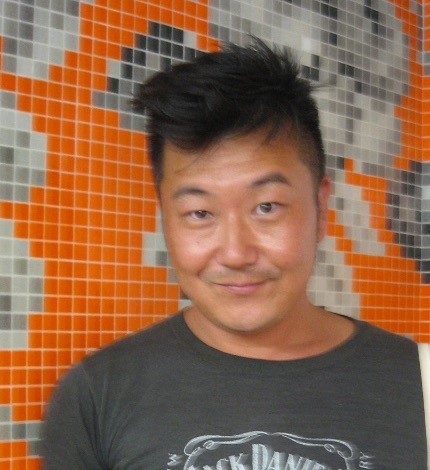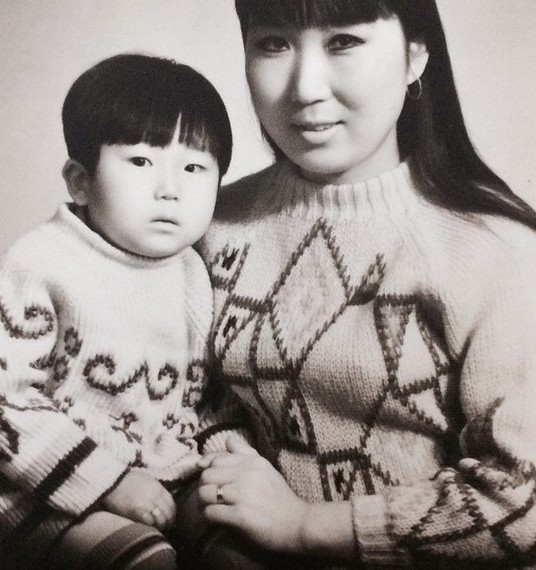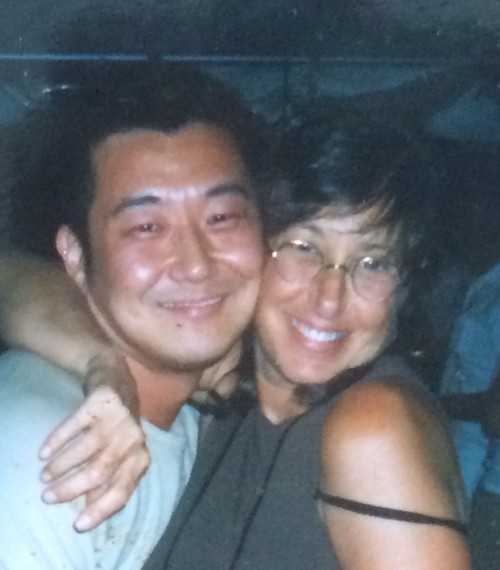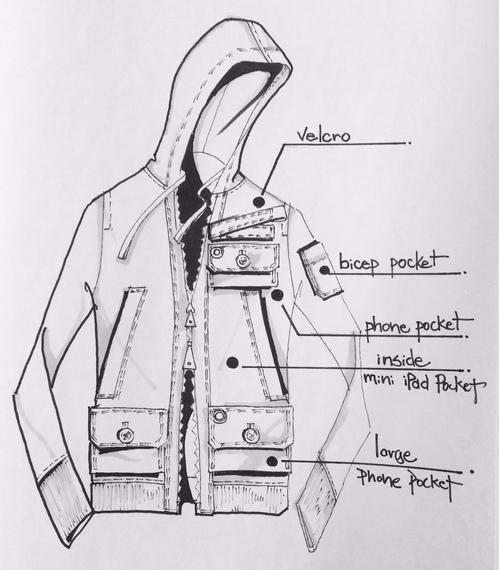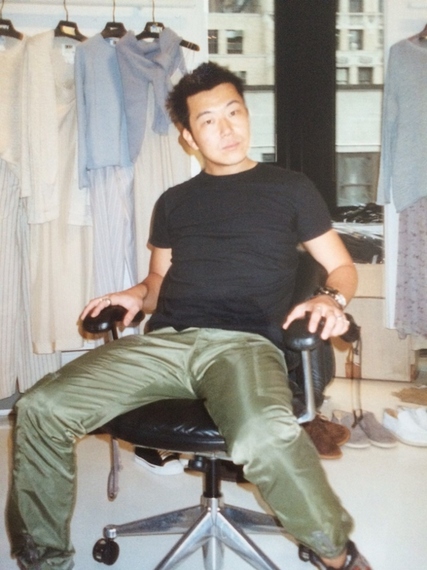The political climate now is voracious. A central issue, perhaps the central issue is Immigration.
In America, Republicans strongly back building a wall, while Democrats are committed to keeping the borders open. Independents might be classified as riding the fence.
Regardless of your political inclination on America's borders, it's long been said that America needs its immigrants; needs the expansion of our culture, economy and thinking that new people bring to this country.
In Europe, due to recently mounting terrorist attacks, Immigration and the restriction/cessation of it appears to be coming down the pike. Certainly, Great Britain has voted that way.
On the other side of the global conversation is the age-old maxim that "America's streets are paved with gold" and for those in desperate poverty with no other surviving options, they certainly are golden, bringing millions with high hopes here.
Add to this volatile political/social mix, the hot topics of Gay Pride, the bullying and hate crimes that are also victimizing this gentle class of people, and we've got a number of problems America faces which can and should be corrected.
So I thought instead of just swallowing these complex quandaries whole, we might look at an immigrant to this great country and try to document and understand his journey. Because it's relevant to all these issues.
Kiger Hansen is a successful New York City fashion designer with his own clothing website. But he wasn't always this way.
By this way, I mean feeling safe and comfortable in his own skin.
You see, Kiger Hansen is a rare example of what I would call a 'triple-whammy effect' for an immigrant. Race, nationality and sexual orientation all played a huge role in Hansen's childhood and early American experience. And, all three made it excruciatingly difficult, bordering on impossible.
But as with Americans and many of the immigrants who come here honestly seeking a better life through hard work, nothing ever turns out to be impossible.
Born in the American military hospital in Busan, South Korea to a Korean mother and American father, Hansen started life incomplete. "I never knew my real father as everyone has kept the information from me, including my Mom," Hansen told me wistfully, "I was hoping my Mom would tell me some day, but she passed unexpectedly in 2009."
"She was beautiful, stylish and second eldest daughter of eight. She was a single mother and fell in love with my stepfather, an American military solder, who was stationed in Korea at the time."
At age seven with his mother and new stepfather, Hansen moved to the Fort Riley, Kansas, Army base to begin a new life. And this new life didn't begin in a big city (where he might be lost in a sea of others), but the smallest of towns, Junction City, Kansas. "It's a small, little city," Hansen told me ominously, "when you pass by it on the highway, it's tiny and easy to miss."
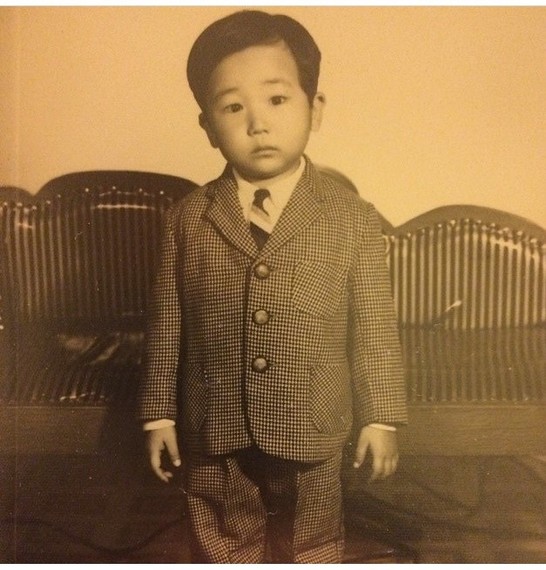 "I always knew I was different and somehow knew I had to keep it a secret ever since I was a toddler. Not sure if it was an intuition or what but I always knew I was homosexual and it was not right to say it to anyone, including my parents. It was a part of a survival mechanism that all of us LGBT community had to deal with ever since we were little and growing up in a society that is taught we are wrong."
"I always knew I was different and somehow knew I had to keep it a secret ever since I was a toddler. Not sure if it was an intuition or what but I always knew I was homosexual and it was not right to say it to anyone, including my parents. It was a part of a survival mechanism that all of us LGBT community had to deal with ever since we were little and growing up in a society that is taught we are wrong."
"I had started my education in Korea at the military base with lots of culturally diverse children. I hardly knew the English language and had never seen different shades of skin, hair and colors of eyes."
Though it was Kiger Hansen who'd never seen these unusually different people; it would conversely be him and his accepting warmth that would be ostracized and browbeaten, almost into submission.
"When we moved to Junction City, it was difficult to make friends as I still hardly knew the language. I didn't like living in a small town; there was no culture, I was picked on by schoolmates and had no friends. As a young Korean, Gay boy, I was bullied for being Asian by kids who grew up together since they were in diapers."
Being a Korean, new to America in relative proximity to the Korean War and to be set down in the middle of the country where anti-Korean sentiments might be characterized as raging, seemed a diabolical set of circumstances.
But Hansen approached his new home and countrymen with all the warmth and love of a small puppy with a new home. He was ready for America.
But was America ready for him?
It wasn't long until this question was answered. There came one specific situation that gave Hansen crystal-clear clarity about what he was up against.
"I remember one incident during recess I was in third grade. There was a group of upper class boys I had crush on and wanted to be part of their group. I always watched them play during recess."
"On that particular day, the leader of the group asked me if I was 'gay.' I did not know that word and as usual, I just smiled and shrugged whenever I did not know. They all giggled and walked away. I was happy they came over to talk to me and thought they wanted to be friends."
So wonderfully naive; so eager to make friends in a new place, Hansen was elated.
Unfortunately, his exultation was not to last long.
"After recess, I hurried back to look up the word in the dictionary, the definition said 'to be happy.' My heart soared with happiness as I thought they were asking me if I was happy and wanted to be friends. I could not wait for the next recess and to tell the leader that I was happy to make friends with them. As soon as the recess bell rang I ran out to find them. I saw them and told the leader happily 'Yes! I'm gay!'"
"I was immediately dirt bombed by everyone, dirt flew in my eyes and I could not see. They pushed and hit me to the ground as well as kicked me. I have no idea where the teachers were on duty at the time, but I lay there on the ground until recess was over and everyone went back into the class room. I was in pain and was crying on the ground."
"No on bothered to come and get me. I didn't want to go back to class, so I walked home."
Simply put, Kiger Hansen had just received the direct message that because he was Asian, because he was Gay and because he didn't look like the other children; he was out and on his own.
On his own meant that Hansen had to create his own world, with his own friends and own culture.
Hearing such atrocious treatment of another person--especially a small boy new to this country--made me angry. Moreover, when the story ended, I nearly wept. Could growing up Gay in America truly be this horribly difficult?
Hansen really drove home the point, "That was basically my life in Kansas, I hated it."
And that was just in third grade, there was more, much more in terms of harrowing experiences and treatment that this young, Gay, new Korean-American boy would have to bear and ultimately, withstand.
His only response could only be to check-out and check-in to his own mind. In building his own "Kiger's World," Hansen had to find things, cultural things that caught his attention somehow, naturally. "Only thing that I loved to do was draw, it brought me peace and happiness and I drew every chance I had."
So sketching became one of Hansen's central retreats--a place of happiness and comfort; he filled up books and books with doodles and drawings. "I sketched and drew a lot; I was just learning English and focusing on the visuals because I didn't understand the words."
Around the age of eight, he began watching TV in an effort to learn the American way. Hansen became engrossed in the TV show, "Charlie's Angels" and in particular, Farrah Fawcett. (Who wasn't?)
Remember this from your bedroom wall?
 Photo Credit: Bruce McBroomOver 12 million sold and counting ...
Photo Credit: Bruce McBroomOver 12 million sold and counting ...
"I watched television a lot to help me learn the language and culture," Hansen said romantically, "I was a huge fan of Charlie's Angels, though I did not know what it was about. Beautiful girls with guns and in action; Farrah on a skateboard running away from the bad guy (in the opening sequence) was mind blowing."
"But it was the title opening sequence that got me. To this day I love that opening sequence with the graphic shadow art that introduce the beautiful actors individually in action and became a huge fan of Farrah Fawcett-Majors. Her effervescent beauty and style was incredible. I had the infamous red bathing suit poster and most of the Charlie's Angels posters on my wall. But it was Farrah I loved the most and her car, the Mustang Cobra II she drove on the show. I wanted the dolls that came out, but my parents refused to get them for me. It would be years later, when I finally got them on eBay in pristine condition in their boxes."
Hansen continued to describe his Farrah obsession: "I made a sketchbook of Charlie's Angels, with a red report cover, photos of the Angels that I got from magazines. I drew what I saw from the show and also made up scenes for the show and wrote a little synopsis on the bottom of the sketch, sort of a sketch comic book."
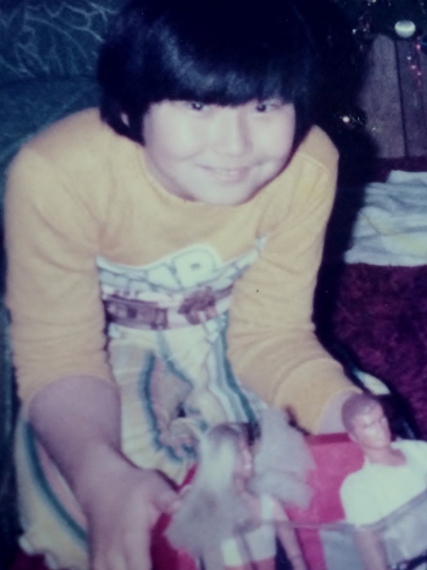 Hansen in a familiar position in front of the TV with his Star Wars t-shirt and Bionic Man and Woman action figures
Hansen in a familiar position in front of the TV with his Star Wars t-shirt and Bionic Man and Woman action figures
There was however, one more iconic fashion star which would seal Hansen's fate and future course into Fashion.
"One fateful night after dinner--I would always lay on my stomach in front of the TV and sketch--the TV went quiet. When I looked up it was skinny legs clad in jeans. A pretty voice came on and I immediately sat up on my knees. By the time the commercial was over I was on my feet. This huge adrenal rush came over and walked into my bedroom and paced to calm myself. I lost my breath and did not know how to breath for a moment. I could not explain the new feeling, also knew it was nothing sexual as I already knew what I felt. I could not believe a 30-second work of art affected me so much. I looked in the mirror and I was flushed so I drank a cup of water to calm down."
What a 10-year old Hansen saw on TV that night, was something unusual, unique. A TV ad so memorable, so tantalizing, that it remains a benchmark in advertising even today.
To a young boy, learning about American culture--fascinated by our culture--interested in fashion in increasing amounts, Brooke Shields and "her Calvins" struck Keiger Hansen like a twisted bolt of yellow lightning.
A simple pair of jeans and its TV ad had opened up a new channel of obsession and learning for a young boy desperately in search of relief.
"A couple of days later while shopping with my Mom, I saw the girl from the commercial on a cover of a magazine. She was breathtakingly beautiful. I stood in front of the magazine, mesmerized until my Mom was done shopping and found me. I was afraid to ask her to buy the magazine for me, but knowing she usually agreed when it was a reading material not a toy, I did ask." Kiger got his magazine.
"The girl on the cover of Vogue, was a model named Brooke Shields. Inside the magazine was also the print ad campaign of the commercial I saw a couple nights ago. The designer of the commercial and jeans was Calvin Klein (CK). I was an instant fan of Brooke and Calvin. The commercial was the one where Brooke reads from a book and says 'Reading is to the mind, what Calvins are to the body.'"
"I started to collect fashion magazine covers of Brooke and all about designer Calvin Klein. I usually ripped the covers off and one after the other started to border my wall to the ceiling with them. I tossed the magazines out in the beginning, but I slowly started to engross myself in the magazines."
Offering a brief respite from the harrowing and painful days at school, Hansen sought solace in these womens' media portrayals to no end. It's no surprise that a young mind finds better places when confronted with hostility and bullying.
"I was thankful she was on the covers every month as my rough day at school became tolerable when I knew I could go home and look forward to a new magazine that Brooke graced. I started to learn the world of fashion, Brooke and Calvin. Then I had to get a pair of 'Calvins' as Brooke called them in the commercial."
From then on, Hansen followed Shields and Klein's design with cult-like fascination; clipping and posting to his bedroom wall all sorts or iconic images and ads. Just as he had with his first love, Farrah.
Around this time, Hansen was also searching for newer, more advanced ways to integrate himself into his new American culture. Brooke Shields and the jeans had struck a chord but Hansen sought more and more. Hansen began his deep desire to actually own a pair of Calvin Klein jeans. This would not be easy for a small immigrant boy in Kansas.
Yet, wouldn't it be cool, wouldn't everybody like him if he only showed up at school in these new, hot and popular jeans?
One weekend, Hansen saw some daylight to getting those jeans. "During my parents errands downtown in Junction City, we drove past a men's clothing store on the main drag. In the window was a sign that said 'newly arrived Calvin Klein Jeans.' I was ecstatic and went to the store after school the next day to look at the jeans. I could not believe I was touching the jeans that connected me to Brooke and Calvin. The large, intimidating salesman startled me and I ran out of the store. I had to save $50 for a pair, as I knew my parents would not buy me very expensive designer jeans."
How would a 10-year old obtain the princely sum of $50?
"I befriended a neighbor boy and it was around fifth grade. He had a newspaper route and his parents asked if I could help out on heavier load days where there were a lot of supplements and the bags were very heavy to carry. I happily agreed as that was a way to save for a pair of Calvins. It took a long time and I finally saved enough to get them. I think it took 8 months to save and it came to that day to go buy a pair. I was so excited that day, I could not wait until school was over. It felt like forever and I went directly after school with my friend to the store."
"The same salesman helped me find my size and he directed me to the fitting room. I could not believe I had them in my hands and was about to be wearing them. In the room, I studied the construction, fabric, hang-tags and finishings. I tried them on and they fit differently than my Levi's. I felt a surge of confidence from the jeans and loved the feeling when I tried them on. I wore them almost everyday and was very careful not to get them dirty or spill anything on them. I pretended they were cut from the same bolt of fabric that they cut for Brooke's jeans, the ones she is wearing in the commercial."
"I felt amazing in them and the bullying was beginning to be less painful when I was in those jeans. By this time, my Brooke and Calvin collection was overpowering the Charlie's Angels posters and they slowly had to come down."
And so, Hansen had somehow found the one thing that helped him feel confident, feel at home. A pair of jeans.
He had worked hard for these pants and that must've made him feel good; that with a little hard work and a goal, someone, anyone, can accomplish anything. A key ingredient of successful American immigration.
For the first time in his young life, Kiger Hansen felt part of something in America--something good. His sketches quickly became fashion-centric and his focus became laser-like. He held on to this and wouldn't let go.
"It was not until I got to junior high that an art teacher--whom I loved--saw my sketchbook of Brooke. She asked if she could look at it. She loved it and asked if I copied them from a magazine or if it was my own. I told her some were copied and some were my own creation. She then said, 'Well you should become a fashion designer!' I was very happy that she said that; it was huge thing to hear from a respected art teacher."
How good must it have felt for Hansen to receive just a little support; just a little positive reinforcement from somebody in a position of authority. It sent him ascending.
"I had a lot of interests at the time; I loved fashion, photography, anything in artistic endeavors and thought I would become a commercial artist like Andy Warhol someday. But as I matured, it was Fashion and that feeling I had when I first tried on a pair of Calvins. It was a sad state of hardly having friends and being bullied all the time, being constantly called 'gay' or 'faggot' and I could not believe a pair of jeans could help me feel better."
Amazingly, blue jeans, Farrah and Brooke had saved Kiger Hansen from an uncertain ... and very unpleasant life.
"I decided to become a fashion designer to help people feel the way I did when I first tried on a pair of Calvins, the feeling of confidence and cool. I wanted to utilize my talent and help everyone feel confident and look great." This seemed to be Hansen's calling.
"I understood our primal instinct of not liking our own kind; until everyone realizes that we all are born in different colors, shapes, sizes and different passions. I'm using my passion and talent of creativity to help everyone feel good about themselves and look fantastic."
Then, the simple act of a teacher giving a student a catalog continued Hansen on his improbable but welcome journey.
"The same high school art teacher gave me a college catalog to a well respected art school in New York, Parsons (School of Design). I studied that catalog and wanted to go there as their curriculum was very diverse and had all the courses I was interested in. The catalog was filled with art and I read it over and over until it started to loose its shape."
"Most importantly they had two locations, one in New York and also in Los Angeles. I thought I could start in Los Angeles and finish in New York. I asked my Dad if I could go there and he said, 'I ain't paying $10,000. a year.' My heart sank, so I started to research other affordable schools."
"I loved Los Angeles when I visited it during my summer break when I was in junior high. The weather and palm trees, as well as the atmosphere was thrilling. It also reminded me how cool it was when I watched Charlie's Angels where the show was based."
"The weather in Kansas was extreme harsh cold winters and very humid summers. I was a little afraid of the big city life of New York and decided that I wanted to go to Los Angeles to study as soon as I graduated from high school."
Hansen however, would not be derailed or dissuaded by his father's refusal.
And he was about to have a permanent change of locale.
"After my Dad rejected Parsons, I researched and found a two-year curriculum at the Fashion Institute of Design and Merchandising (FIDM) in Los Angeles. I thought I could study for two years and learn the rest on the job."
"I bid my horrible time in Kansas goodbye and could not wait to leave. As soon as I graduated, I moved to Los Angeles to attend FIDM. I distinctly remember leaving my parents at the gate in Kansas City Airport, leaving my crying Mom. How excited I was to leave my dreaded past and start my freedom as a Gay artist."
"I remember the minute the plane took off and I felt the heavy shackles of chains around my neck, wrists and ankles come off. This feeling of heaviness lifted off and I could finally be me. All the suppressed feelings and a side of me that I could not truly be; that I could finally live my life as open and free as I could."
"The first week of school was intense; nobody could believe I was from Kansas and I had to show my drivers license to prove it. They all thought it was an air of mysticism I was trying to create for myself. I made a lot of great friends and finally got to talk about subjects I longed to talk about. But most importantly I made friends, a group of friends that I never had before."
The "Korean redneck," as Hansen humorously refers to himself, was about to learn the ways of a big-city sophisticate.
"I studied hard and threw myself in all the school had to offer. I got retail jobs at a glamorous mall called the Beverly Center where all the celebrities shopped. I saw and met most of all the angels except for Kate Jackson and my ultimate, Farrah."
"My first year flew by and I got straight A's in all of my classes. I went back to Kansas as little as possible to visit my parents but I still hated and dreaded going back to Kansas. I continued to work at retail shops during the school breaks and during my second year I started to intern at various design companies. At one of the companies I befriended a gorgeous, sweet girl that I worked with."
The "sweet girl" Hansen refers to ended up working at Guess Jeans. In a monstrously good freak of timing, Guess Jeans were just exploding on the American cultural scene and for any consumer might just surpass the incumbent Levis in sales.
"When the girl I was working with during my internship got a job at Guess, we both celebrated during our lunch hour. I begged and pleaded with her that she had to contact me when there was a position open for me. I also contacted Guess' human resources myself almost once every two weeks and started to befriend the head of HR."
"A few months later, my friend called me; there was an opening at Guess. I was flabbergasted and thrilled to death as she set up an interview with the founder Georges Marciano."
"It felt like Christmas Eve the night before the interview and I was too thrilled to sleep. With little sleep, I drove downtown to the headquarters. I was very nervous and walked into the lobby 20 minutes before my appointment. The lobby was filled with my favorite ad campaigns and was getting more excited and thrilled. Georges' secretary came out to the lobby and asked if I needed anything before I met with Georges. I said 'no,' and could not believe she greeted me as 'Mister Hansen.'"
"She came back out to get me and led me to the conference room to meet Georges. My palms were clammy and portfolio kept slipping out of my hands. I also prepared some sketches to present to Georges for the meeting and was very happy how they came out."
"The conference room was large and there was a large oval oak table with leather seats. I sat myself down and prepped my portfolio as the secretary left me. Shortly, Georges walked in wearing his usual uniform: white Guess polo shirt and white pleated chino pants. I was very happy and excited to meet him and it showed. He loved my portfolio, we chatted briefly and then he showed me around the complex where all the samples of jeans were made. As we walked and talked he said, 'I want you to work for me a long time and take my place someday.' I could not believe my ears, as we we passed neatly hung, fresh, new pairs of jeans. The smell of denim and the noise of the sewing machines was intoxicating."
For a young man so enraptured by jeans since a small boy, Guess Jeans must have been heavenly.
"He finally lead me to the design room where I got to meet all the designers and my friend who set up the meeting. When the meeting was over and he led me out, we shook hands goodbye--I was starting next week!"
"I could not believe I nailed my dream job and was offered it instantaneously by Georges Marciano himself. My hands smelled like Hermes and I kept smelling it on my drive home and could not explain the happiness I felt."
"I remember my first paycheck as it was pink with a large red guess logo. I did not want to cash it, I wanted to frame it! But I needed the money."
"I was there for five years as I worked from design assistant to designer. I learned a great deal as a denim designer it was crucial to be very technical in all aspect of the design. When the men's designer left, Georges asked me if I would design the Men's line for him. I was thrilled!"
After five years of working for Marciano and Guess, there was a massive legal battle leading to Georges selling his stake to his brothers and leaving his own company. "When Georges decided to leave the company, I left as well, out of my respect for him."
"I decided to launch my own line of jeans; hoping to find a investor/business partner when I launched it. I used all of my savings, got a credit card, borrowed $10,000 from my parents and launched 'kiger denim.'"
"With help from all of my connections from working at Guess everyone was kind and helped me from fabric companies to denim laundry houses. Many top jeans' boutiques in LA and New York bought the denim line."
"Georges was very interested in backing me, but he wanted to own and trademark my name. I did not like the deal and turned it down as I wanted to own my own name. I could not find a business partner I trusted so I filed bankruptcy and decided to move to New York and work for my ultimate, Calvin Klein."
Then, fate would again give Hansen an assist. He saw Calvin Klein was at an LA event and went. Getting his resume to Klein's assistant and chatting briefly with Klein himself, Hansen was ecstatic.
But he didn't get hired by his hero. "It did help me to realize that I was a talented designer and was very fortunate," Hansen recalled wistfully.
"After I moved from Los Angeles to get a job in New York. I stayed with my uncle who lived in Washington D.C. I rode trains everyday to New York to find a job and everyday it was exhilarating with all the excitement of Fashion Avenue and quick pace of Manhattan."
"I personally carried my resume to every design office and left them with human resources and met with as many recruiters as possible."
"I finally landed an interview with DKNY and got a job as their women's jeans designer. At the time I was trying to shake off the denim designer tag and I wanted to learn to design all other fabrications and classifications. I needed a job and was very thrilled I got it at a prestigious company as DKNY."
"I remember first meeting Donna (Karan), I was very nervous. The whole design team from all divisions were present and I was very intimidated by everyone. This Korean redneck from Kansas in a room filled with chic European designers and a little handful of Americans. She saw me in the corner of her eye and noticed I was new."
"She asked, 'Is there anyone new, I have not met?'"
"I was too nervous and scared to say anything, as some designers looked at me. So she made everyone stand up and introduce themselves to everyone and what their positions were. I dreaded for my turn as I so nervous, with my shaky voice I mumbled and quickly sat down as I felt the blood rushing to my face."
Hansen must've aced that first mandatory stand-up intro because he went on to rise rapidly inside DKNY.
"I loved and respected all of my opportunities and learned from great designers that I had worked with, even though I never got to work at Calvin Klein. But my ultimate dream was to launch my own line."
So Hansen started sketching and designing for himself; the time was right.
"That is why I decided to launch a Kickstarter campaign to produce a design and hope to raise capital to launch my luxury brand 'kiger.'"
Hansen's central launch product is a high-tech jacket, like a hoodie, which accommodates all the technology and hardware formerly dripping off our body or ensconced on Batman-like belts.
"The design concept of k5-jkt. (Kiger 5 jacket) by kiger started in August, 2015 when the issue I discovered was how to properly store tangled headphone wires and our mobile devices in our clothing." "One day on the platform of subway stop as I was awaiting the train to arrive. A guy drops his iPhone and then I see another guy walking downstairs taking his headphone wires out of his jeans pocket and struggling to get it all untangled."
"The train arrives and as I find my seat, a guy runs into the train right before the door closes in a cool designer hoodie. Then all those latest visuals hit me, a hoodie with utilitarian pockets that properly stored our mobile devices and keeps our headphone wires in place and tangle free."
"I immediately started to sketch the jacket in my head and by the subway next stop, it was designed and ready to actually be sketched on a sheet of paper. Except for the headphone wire detail, I was still trying to design that problem."
"In the concept, I combined an essential zip-up, sweatshirt-hoodie with the ubiquitous, military, M-65 field jacket for the utilitarian pockets. As I was sketching different possibilities and pulled out my vintage jackets from my closet, I came across my vintage fisherman's vest in denim. It had a square, sheep shearling for holding the fishing lures."
"Then I remembered a few days earlier, when I was telling another designer friend how much I hated Velcro closures in most jacket sleeve-cuff closures. Right then, I solved the headphone wires storage design. Where there is a twill braid for the identification on all military outerwear is where the placement of the Velcro would stand. I used the Velcro from my outerwear jackets and sure enough it held the headphone wires in place."
"Helping a Korean redneck's dream come true"
"All the materials to build the jacket are the highest quality. The zipper is from YKK and the buttons are made from melamine; it is stronger and more durable, as well as flame retardant. It is the same as the military issue button."
"Overall the jacket is ageless, classic and it will never go out of style. You can wear it year-round and it's also a great layering piece where you can wear it under another outerwear. I also suggest to get it one size bigger as it looks better worn more relaxed. It is machine washable and it is comfortable and cool."
Kiger Hansen's fashions can be seen on his website here and his Kickstarter campaign for his high-tech hoodie jacket can be seen here. Hansen's hoodie is seeking $20,000 over then next 45 days, ending August 19th.
Hansen's rocky journey in what is now his America, continues unabated by Gay bashing incidents and hate crimes. He was beaten up and the offenders caught and prosecuted, whilst catcalls of 'faggot,' attempted robberies/assaults and other personal affronts continue with some shocking frequency. But he carries right on like a Brit during the London Blitz, remaining calm and on a mission.
He's very attuned to how he might help others being bullied through my telling of his story. "Even though we have come far, we have some much more to conquer. I'm not sure where the bullying stems from. It is part of growing up? Kids bully each other for not just being gay but also having different color hair, race or whatever ... I feel it is the parents' responsibility to teach their children when they are ready to send them off to schools how to act and treat other friends. I also hope the teachers are aware and know how to handle the situations when they are confronted with them."
And Hansen is not alone in his small effort to stop bullying. No less than Prince William and Richard Branson have recently come out strongly against this kind of awful tearing down of other human beings.
Bullying has no place in the world.
Hopefully, this kind of concerted effort between famous celebrities and everyday citizens like Kiger Hansen will lead to this scourge of our youth dying the ugly death it so deserves.
"My little contribution to society is that I could be a fashion designer and give that same sense of confidence and comfort to everybody else that I had in trying on those first pair of my CK Jeans," Hansen told me.
As Kiger Hansen was guided by this article to look back over his incredible, improbable and ultimately, triumphant life's journey, he must have an emboldened sense of confidence and happiness. I hope he thinks all the sorrow, pain and agony of growing up Gay and a foreigner in America was worth it in the end.
One would hope so anyway.

